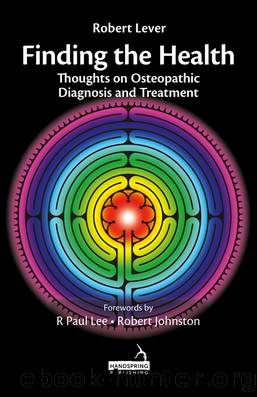Finding the Health by Lever Robert

Author:Lever, Robert
Language: eng
Format: epub
Publisher: Handspring Pub Ltd
Published: 2016-11-20T16:00:00+00:00
Chapter 7
Transcending technique
By concentrating on precision, one arrives at technique, but by concentrating on technique one does not arrive at precision.
(Bruno Walter)
The more technique you have, the less you have to worry about it. The more technique there is, the less there is.
(Pablo Picasso)
Many conversations about technique in osteopathy revolve around what you do to something. A tissue dysfunction is engaged and then, choosing from a range of manoeuvres, it is ‘neutralised’, normalised or corrected. In some approaches, tissues considered responsible for triggering the patient’s pain or disorder are identified and targeted with an appropriate corrective technique. An array of theoretical and philosophical positions steer the practitioner towards one or other method, governed, in part of course, by the demands of the situation and the nature of the lesion and, for some, the powerful argument that we facilitate the body’s own corrective potency. But even so, the choice is often wide. So, for example, we have direct or indirect technique – whether structural or cranial; we have ‘functional technique’, BLT, BMT, HVT, MET, articulatory technique, soft-tissue and ‘visceral’ techniques, all at best, involving varying degrees of stillness, listening, activity, passivity, etc., depending on the technique or, more especially, the practitioner’s attitude.
But the choice of technique so often represents what we do once we have arrived at the end of a process (including a clinical diagnosis), a decision that follows the appraisal of an abnormal situation that we, as osteopaths, assess in terms of altered function, loss of integration and rhythm, altered balance, texture, mobility and motility. All of these express varying levels of subtlety, available to the palpating hand depending on sensitivity, ability and approach. With certain approaches, this decision-making unfolds with the treatment as progressive manoeuvres explore and integrate in a seamless exposition of diagnosis and treatment. At times, diagnosis and the acknowledgement or engagement of the lesion that comes with it are indistinguishable from treatment itself. In this sense, sensitive palpation and mobility testing sometimes produce therapeutic effects even before ‘treatment’ itself has begun, echoing the therapeutic impact that accompanies the engagement of the lesion pattern/focus during IVM treatment, for example. The power of ‘acknowledgement’ should never be underestimated (provided the acknowledgement is appropriate and accurately targeted).
OBJECTIVES
Theories abound on the subject of what different forms of manipulation achieve at the site to which they’re applied. So, for example, both MET and ‘functional technique’ restore correct muscle tension through different ways of appealing to proprioceptor feedback. HVT (or HVLA) restores motion to spinal segments by harmonising proprioception at the multiple tissue sites related to those segments: muscle spindles, Ruffini endings, Pacinean corpuscles, Golgi tendon receptors, etc., reducing nociceptive input to the cord. Soft tissue treatments have several objectives, also relating to normalising tension but notably assisting with fluid dynamics, blood supply and especially drainage (including metabolites resulting from excess tension or stress). Articulatory technique addresses many of the same features and parameters. ‘Cranial’ technique addresses rhythmicity in CSF fluctuation, adequacy of ‘primary respiration’ and the expression of ‘breath’ throughout
Download
This site does not store any files on its server. We only index and link to content provided by other sites. Please contact the content providers to delete copyright contents if any and email us, we'll remove relevant links or contents immediately.
Inner Engineering: A Yogi's Guide to Joy by Sadhguru(6748)
The Power of Now: A Guide to Spiritual Enlightenment by Eckhart Tolle(5670)
Fear by Osho(4690)
Ikigai by Héctor García & Francesc Miralles(4160)
The Art of Happiness by The Dalai Lama(4084)
The Ultimate Bodybuilding Cookbook by Kendall Lou Schmidt(3904)
Yoga Therapy by Mark Stephens(3719)
The Little Book of Hygge by Meik Wiking(3658)
The Healing Self by Deepak Chopra(3517)
Why Buddhism is True by Robert Wright(3418)
The Hatha Yoga Pradipika (Translated) by Svatmarama(3277)
Being Aware of Being Aware by Rupert Spira(3244)
Shift into Freedom by Loch Kelly(3158)
Wild Words from Wild Women by Stephens Autumn(3110)
Work Clean by Dan Charnas(3075)
Happiness by Matthieu Ricard(3015)
More Language of Letting Go: 366 New Daily Meditations by Melody Beattie(2996)
Yoga Body & Mind Handbook by Jasmine Tarkeshi(2849)
Why I Am Not a Feminist by Jessa Crispin(2715)
